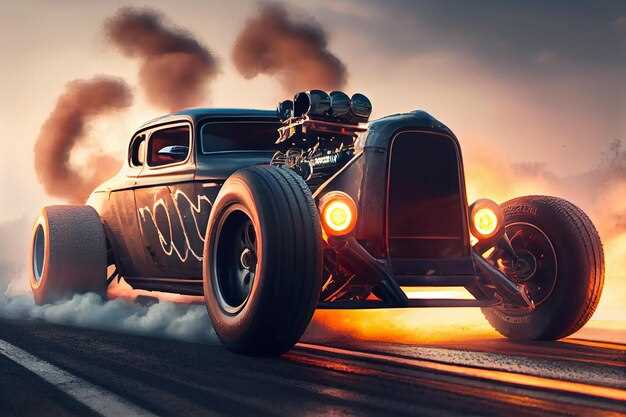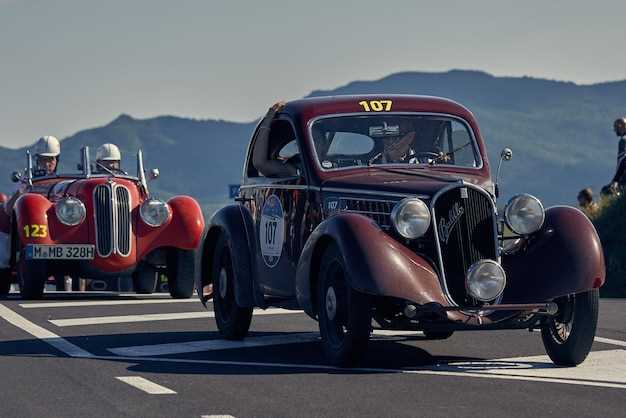
The 20th century witnessed the birth of many legendary racing cars that not only transformed the landscape of motorsport but also captivated the hearts of enthusiasts worldwide. These machines, born from a blend of engineering excellence and innovative design, became symbols of speed, power, and resilience. From the roaring engines of the early decades to the sophisticated technologies of the later years, each racing car tells a story of ambition and triumph.
Throughout this transformative century, legendary models emerged from distinguished manufacturers, establishing their dominance on racetracks and achieving remarkable feats in competitions. Iconic brands like Ferrari, Porsche, and McLaren pushed the boundaries of performance, crafting vehicles that embodied the spirit of racing. The achievements of these cars not only etched their names in history but also influenced the evolution of automotive technology.
This article delves into the remarkable tales of these legendary racing cars–exploring their designs, innovations, and the remarkable drivers who tamed them. Join us on a journey through time as we revisit the milestones that shaped the world of racing and recognize the extraordinary vehicles that continue to inspire a passion for speed.
Iconic Performance Models and Their Innovations

The history of legendary racing cars is marked by remarkable performance models that have forever changed the automotive landscape. These vehicles not only dominated racetracks but also introduced groundbreaking innovations that influenced production cars. Each of these iconic models embodies a unique blend of engineering excellence and racing spirit, helping shape the future of motorsport.
One of the most significant examples is the Ford GT40, designed specifically to conquer the 24 Hours of Le Mans in the 1960s. With its mid-engine layout, aerodynamic design, and powerful V8 engine, the GT40 showcased a commitment to performance that made it legendary. Its innovative use of lightweight materials and advanced suspension systems set new benchmarks for endurance racing.
Another remarkable model is the Porsche 917, a car that redefined speed in the world of endurance racing. Representing cutting-edge technology of its time, the 917 featured a flat-12 engine and a lightweight chassis that showcased the importance of aerodynamics. It achieved iconic status after winning multiple championships, proving that innovation in engineering can lead to racing domination.
The Ferrari 312P, with its distinctive design and vibrant history, is another emblematic model that left a lasting impact. Developed during the late 1960s, it employed a mid-engine configuration and a potent V12 engine, offering both speed and reliability. Its victories in various racing events cemented its reputation as a legendary car, illustrating the fusion of artistic design and competitive performance.
The innovations found within these iconic performance models extend beyond mere horsepower; they reflect a dedication to pushing the boundaries of what is possible in racing. From advancements in aerodynamics to cutting-edge materials, each vehicle tells a tale of progress inspired by the relentless pursuit of victory on the racetrack.
Influential Races and Championships of the Era
The 20th century was a defining period for motorsport, marked by a series of races and championships that showcased legendary cars and shaped the history of automotive performance. Each event not only highlighted technical advancements but also played a crucial role in the evolution of racing culture worldwide.
One of the most influential races was the 24 Hours of Le Mans, first held in 1923. This endurance race tested not only the speed of cars but also their durability, leading manufacturers like Ferrari, Porsche, and Ford to push the limits of engineering. The rivalry between Ford and Ferrari in the 1960s is legendary, culminating in the famous 1966 race where Ford’s GT40 triumphed, marking a turning point in racing history.
The Formula One World Championship, inaugurated in 1950, transformed the landscape of motorsport with its combination of speed, technology, and glamour. Legendary cars like the Ferrari 251 and the McLaren MP4/4 captured imaginations around the globe, while drivers such as Juan Manuel Fangio and Ayrton Senna became icons of the sport. Their feats on the track pushed the boundaries of what was possible, inspiring future generations.
Another significant championship was the Indy 500, which began in 1911. This race not only solidified the popularity of open-wheel racing in America but also contributed to the development of groundbreaking technologies, including rear-engine cars. The racing strategies and innovations seen in this race influenced the broader narrative of motorsport history.
The World Rally Championship (WRC), established in 1973, further diversified racing, bringing legendary vehicles like the Audi Quattro and Lancia Delta Integrale into the spotlight. These cars demonstrated that versatility and skill were as important as sheer speed, influencing a generation of drivers and fans alike.
In summary, the influential races and championships of the 20th century were instrumental in shaping the automotive landscape. Legendary cars and the fierce competition between teams not only birthed remarkable innovations but also left an indelible mark on history, making motorsport a celebrated facet of global culture.
Impact of Racing Technology on Modern Cars

The history of legendary racing cars has paved the way for significant advancements in automotive technology that shape modern vehicles. The innovations once developed for the racetrack are now commonplace in everyday cars, enhancing performance, safety, and efficiency.
- Engine Technology: High-performance engines developed for racing often feature turbocharging and direct fuel injection, improving power output and fuel efficiency.
- Materials: The use of lightweight materials like carbon fiber and aluminum in legendary racing cars has influenced mass production, leading to lighter, more agile modern vehicles.
- Aerodynamics: Techniques and designs focused on reducing drag in racing have been adapted in consumer cars, allowing for better fuel economy and stability at high speeds.
- Suspension Systems: Advanced suspension technologies like active suspension, initially developed for racing, enhance ride quality and handling in modern cars.
Moreover, safety features witnessed in racing, such as roll cages and advanced braking systems, have made their way into mainstream automotive design. The emphasis on performance and safety in legendary cars has driven manufacturers to innovate continuously.
- On-Board Technology: Features like electronic stability control and anti-lock braking systems were derived from motorsport applications, enhancing driver control.
- Hybrid and Electric Propulsion: The racing world has seen a surge in hybrid technologies, influencing the development of electric vehicles aimed at sustainability.
In summary, the legacy of legendary racing cars continues to impact the automotive industry, inspiring advancements that enhance the driving experience and set new standards for modern cars.

